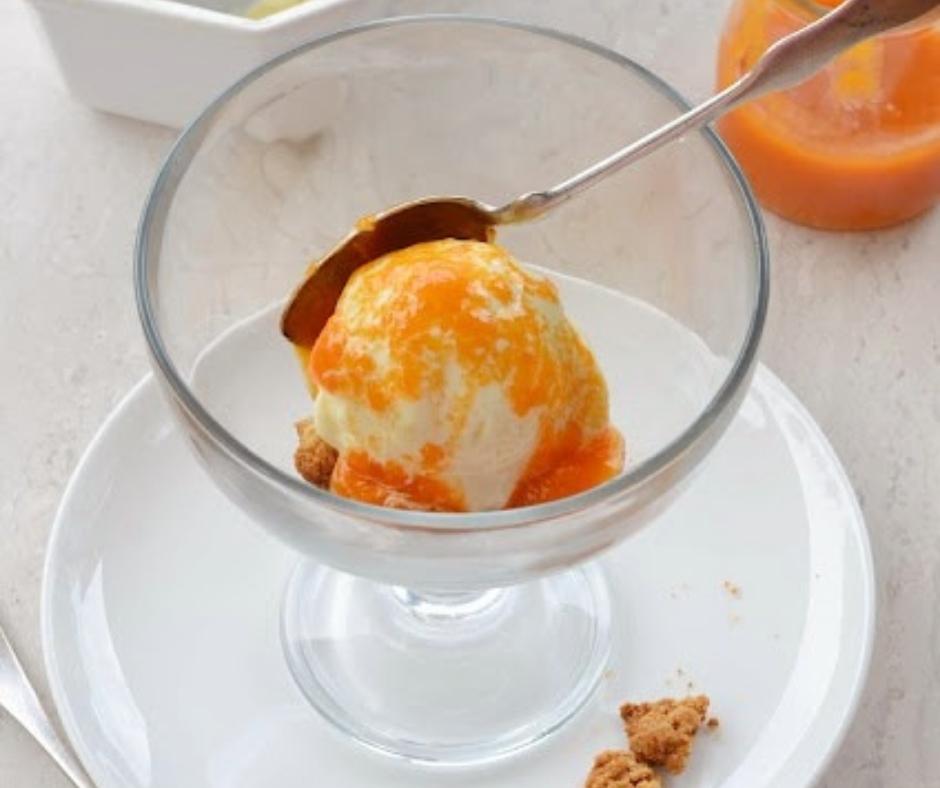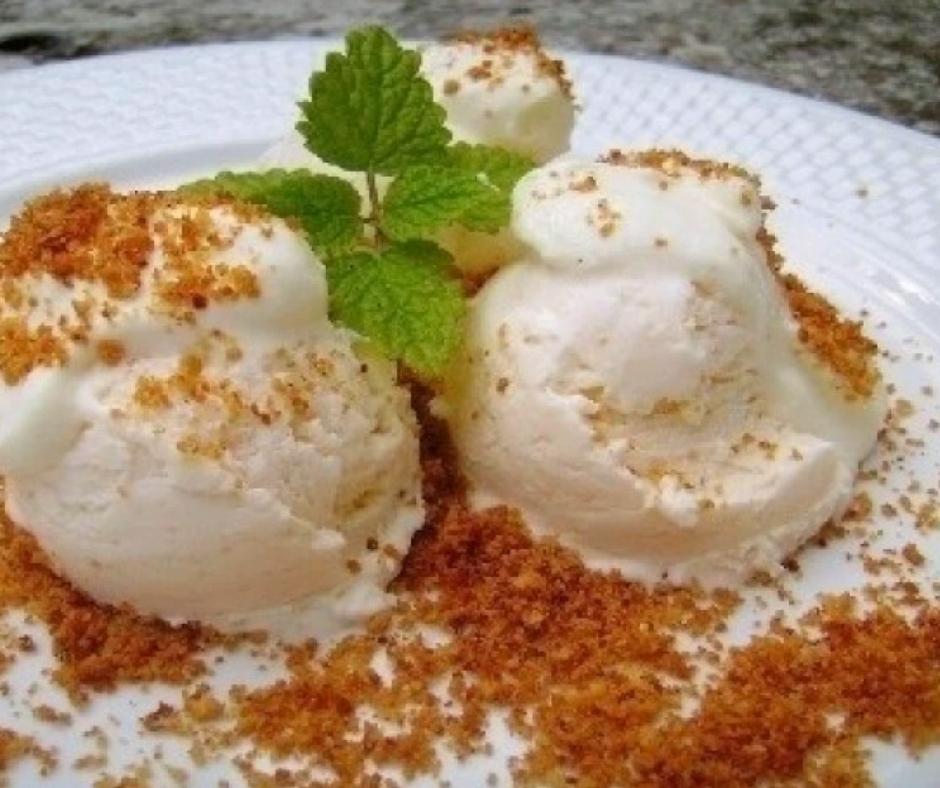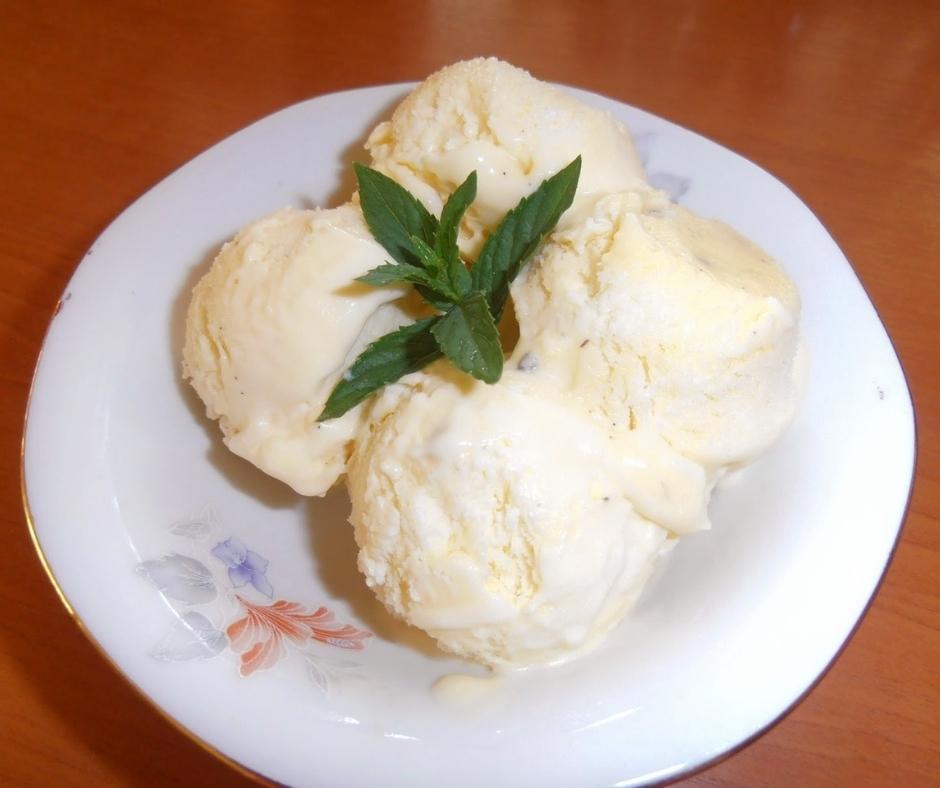Ice cream recipes inspired by classic Hungarian desserts!
These silky, luscious icy treats, dreamed up based on traditional Hungarian desserts, will be the all-time favourite summer refreshments for the whole family. You only need a couple of simple ingredients to create these creamy wonders. Here we present you three delicious Hungarian ice cream recipes that you can try at home when the thermometer hits 30°C.
Rákóczi cottage cheese ice cream
Beat the heat with this classic Hungarian ice cream. Inspired by the traditional meringue-topped apricot-y shortbread-like Hungarian pastry, this cold delicacy will amaze your taste buds. Find the original recipe HERE!

Source: http://vaniliaakonyhaban.blogspot.com/
Ingredients for 5dl ice cream:
| 125 ml cream
180 ml whole milk 50 g sugar 2 egg yolks 1 egg |
pinch of salt
the zest of a 1/4 lemon half a vanilla pod 75 g cottage cheese |
For the crumbs:
| 50 g butter
50 g sugar |
50 g all-purpose flour
50 g almond flour |
For the apricot jam:
| 1 kg ripe apricots peeled and pitted
15 dkg cane sugar |
1 tbsp apple pectin or apple extract |
Instructions:
|
Read more: Hungarian cottage cheese dumpling recipe has become world-famous
Cottage cheese dumpling ice cream with cream cold foam
Are you looking for the smoothest, creamiest homemade ice cream recipe in history? You are in the right place! This cottage cheese dumpling-inspired ice cream will be a staple in your fridge during the hot days! Read the original recipe HERE!

Source: nosalty.hu
Ingredients:
| 4 egg yolks
10 dkg sugar 2 dl whipped cream 25 dkg mascarpone 1 tbsp semolina 25 dkg cottage cheese zest of a lemon |
a pinch of salt
5 pieces of biscuit of your choice 3 dkg butter 150 g sour cream 1 dl whipped cream 1 packet of whipped cream stabiliser 5 dkg icing sugar |
Instructions:
|
Madártej or floating island ice cream
Every Hungarian child’s favorite snack, the floating island is one exquisite dessert you will have again and again. It does not require fancy-sounding components, and it is super easy to create. Find the original recipe HERE!

Source: http://gerdisuti.blogspot.com/
Ingredients:
| 5 egg yolks
20 dkg sugar half a vanilla pod |
5 dl whole milk
4 dl cream |
Instructions:
|
Read more: Recipe of the week: madártej / floating island
Source: gerdisuti.blogspot.com, nosalty.hu, vaniliaakonyhaban.blogspot.com
please make a donation here
Hot news
According to Minister Navracsics, this one policy will be priority of Hungarian presidency – UPDATED
Today only: Hungarian airline Wizz Air is offering cheap flights!
Budapest Airport wins best airport in the region award for the 11th time!
Amazing: Budapest’s immensely popular Danube beach free this summer!
VIDEOS: Serbian-Hungarian drug trafficking ring busted in Budapest
PHOTOS: Hungary’s newest luxurious Hilton hotel to open soon!




4 Comments
“For the crumb: ” So you only get one crumb? Singular, a crumb. Or does this make more than one, so one has ‘crumbs’? Or perhaps you mean ‘Crumble’ as in the classic dessert called Apple Crumble? One crumb seems rather bizarre to say the least!
Also, a “vanilla bean” is usually called a vanilla pod by cooks, chefs and supermarkets except occasionally in places that don’t know better. Read and learn: “What we call a vanilla “bean” is actually the pod-shape fruit that grows on a climbing orchid of the genus Vanilla, which includes around 100 species native to tropical Central and northern Southern America. Vanilla orchids are pollinated by hummingbirds and tiny bees only found in vanilla’s native habitat. When grown outside their range, the orchids are painstakingly hand-pollinated by humans, which is part of the reason why vanilla is one of the most expensive flavorings available (topped only by saffron).
The pods themselves are 6 to 12 inches long and contain thousands of tiny seeds that stick to the pod walls. Vanilla flavor, which comes mainly from vanillin (and about 200 other flavor compounds) is bonded to a sugar molecule and only releases its aromas when the pod is damaged. Vanilla flavor comes from both the sticky resin surrounding the seeds and the pod wall.”
https://www.masterclass.com/articles/how-to-use-vanilla-difference-between-vanilla-extract-vanilla-beans-and-vanilla-pods#what-is-a-vanilla-bean
Dear Kati, thanks for calling our attention to it.
We’ve changed vanilla bean to vanilla pod. 🙂